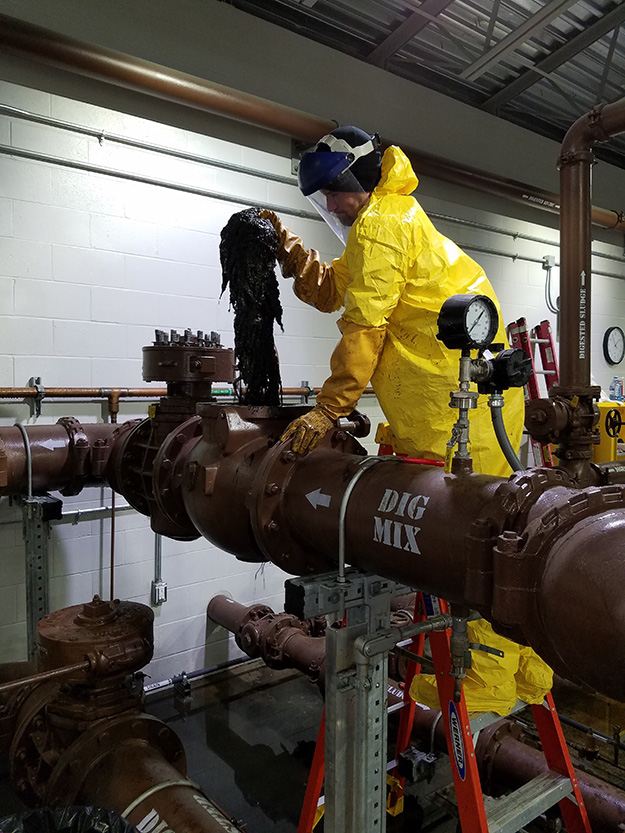JOINT BASE LEWIS-MCCHORD - On a recent tour of the Joint Base Lewis-McChord (JBLM) wastewater treatment plant (WWTP), Eric Rogers, a wastewater treatment plant operator, stated that, "This four year old facility is state of the art for wastewater treatment. Allowing us to preform nutrient removal, which is very important. We want the water that flows through the plant to be as clean as possible before discharging to the Puget Sound."
What is flushed can impact the functioning of this highly tuned machine.
"Diapers, paper towels, wipes, all of those things are not flushable", Rogers said. "Now with COVID, people try to flush the paper masks. Just because it can go down the toilet doesn't mean it should."
Workers at the WWTP have to don full hazardous material suits to clean out the pumps on a regular basis.
The plant currently processes one to two million gallons of wastewater a day, and it is designed for more than four million gallons a day. During a heavy rainfall, the WWTP can process up to 12 million gallons a day of water through the system.
Wastewater flows into long tanks, where the sludge, or solid material, falls to the bottom and is scraped off and sent to a digester. There the sludge will become biosolids, a beneficial use of this nitrogen rich material, which when dried are applied to non-food products such as hayfields, or tree farms. The liquid wastewater continues into segmented tanks to remove the nutrients, ammonia and nitrogen.
The wastewater moves through the system, filtering out all grit, eggshell or other matter and is ultimately submitted to ultraviolet light to disinfect the water. The UV lights penetrate pathogens and sterilizes them.
"The treated wastewater flows four feet away from the UV bulbs, before being released to the Puget Sound", explained Rogers. "The more sediment in the water, the higher the intensity of the bulbs. There is a wiper that goes up and down the bulbs removing any algae growing there."
"JBLM WWTP is regulated by the Environmental Protection Agency because it is a federal facility, although the Washington Department of Ecology is copied on everything," stated Rogers.
A final comment brings us right back to where we started: "At the end of the day it depends on what people flush, or put down the drain and it takes everyone to be mindful", Rogers said.





Read Comments